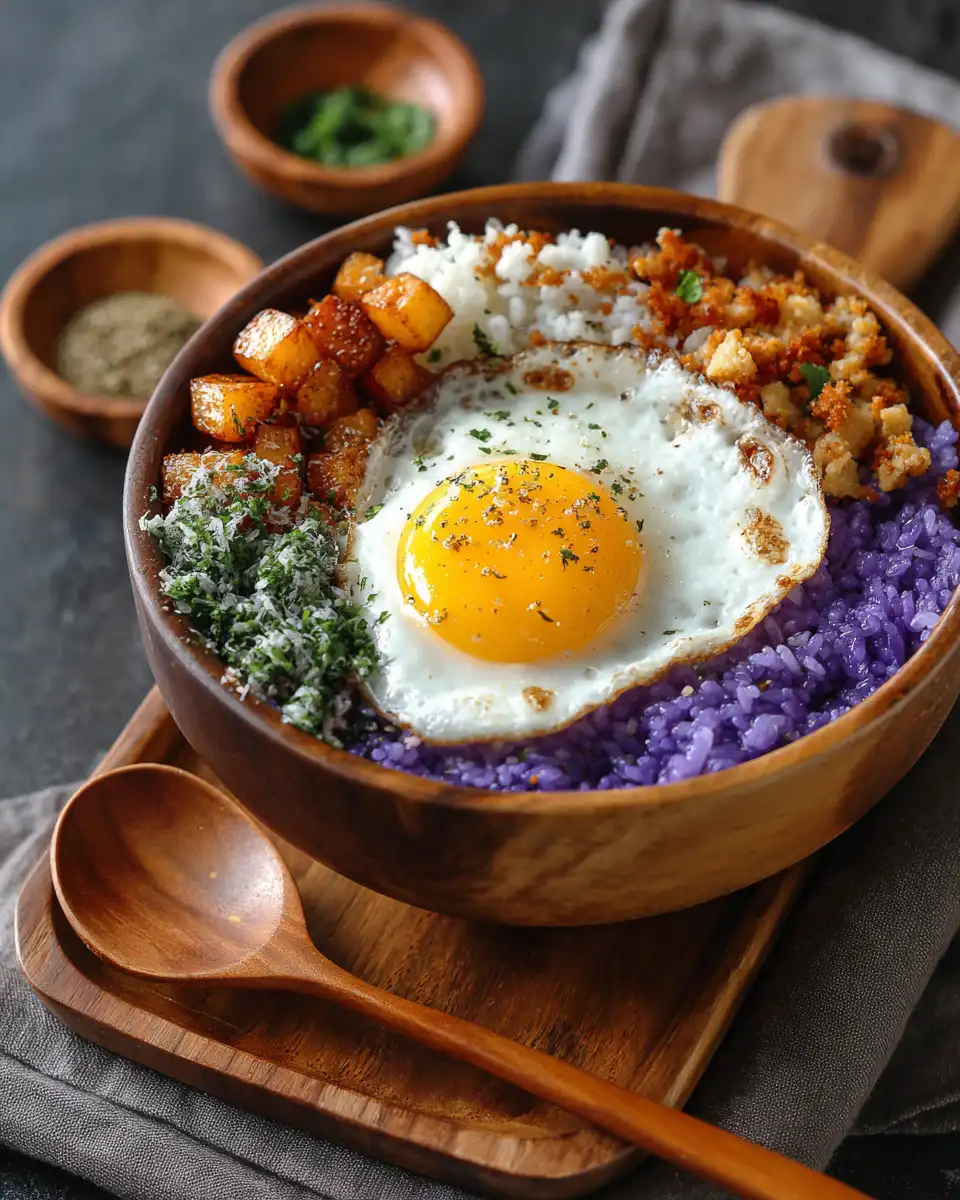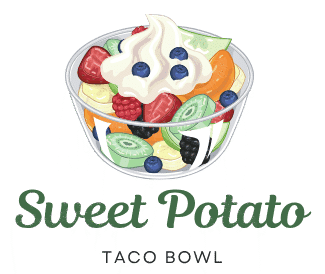Have you ever wondered how a simple breakfast bowl could completely transform your morning routine? What if that breakfast not only tastes incredible but also packs a colorful, nutrient-rich punch to fuel your day? Enter the ube breakfast bowl, a vibrant and delicious way to start your mornings that challenges the traditional bland breakfast stereotype.

This purple-hued treat made from ube, a sweet purple yam, is rapidly gaining popularity worldwide and for good reason. If you’re looking to brighten your mornings with something wholesome, visually stunning, and packed with flavor, this post will guide you through the 5 best ube breakfast bowl recipes you need to try.
Ingredients List
Creating the perfect ube breakfast bowl begins with the right ingredients. Whether you prefer a creamy smoothie base or a hearty grain base, here’s what you’ll need to get started:
- Ube (purple yam) puree or powder – The star ingredient offering natural sweetness, vibrant color, and antioxidants.
- Greek yogurt or coconut yogurt – For a creamy, protein-packed base.
- Rolled oats or quinoa – Adds texture and complex carbs for sustained energy.
- Bananas or mangoes – Natural sweetness and creamy texture.
- Chia seeds or flax seeds – Rich in omega-3s and fiber.
- Almond milk or coconut milk – A creamy, non-dairy liquid base that can be substituted with any milk alternative.
- Toppings: Fresh berries, shredded coconut, granola, nuts, or honey for extra flavor and crunch.
Pro tip: If you don’t have fresh ube puree, ube powder or frozen ube can easily substitute, offering the same vibrant color and taste profile.
Timing
One of the best aspects of the ube breakfast bowl is its versatility in terms of preparation time. Depending on the recipe you choose, here’s what to expect:
- Prep Time: 5–10 minutes
- Cooking Time: 10–20 minutes (if using ingredients like quinoa or oats cooked with ube)
- Total Time: Approximately 15–30 minutes
Compared to standard breakfast bowls that can take upwards of 40 minutes when baking or cooking grains separately, an ube breakfast bowl saves you at least 20% of your precious morning time, making it perfect for busy weekdays or relaxed weekend brunches.
Step-by-Step Instructions
1. Prepare the Ube Base Smoothie
Start by blending ½ cup of ube puree, 1 frozen banana, ½ cup Greek yogurt, and 1 cup almond milk. Blend until smooth and creamy. This forms a luscious, purple canvas rich in antioxidants and natural sweetness.
Tip: Add a teaspoon of honey or maple syrup for an extra sweet touch.
2. Cook the Quinoa or Oats with Ube Flavor
Combine ½ cup of rolled oats or quinoa with 1 cup almond milk and 2 tablespoons ube powder in a saucepan. Cook over medium heat, stirring occasionally, until the liquid absorbs and the grains are tender, about 10-15 minutes.
Tip: Stir in a pinch of cinnamon or freshly grated nutmeg to add a warm aromatic note.
3. Assemble the Bowl
Spoon the cooked quinoa or oats into a bowl. Pour the ube smoothie base over it. The contrasting textures create an irresistible combination.
4. Add Your Favorite Toppings
Top with fresh berries, chia seeds, shredded coconut, and a handful of nuts for crunch and nutrition. Drizzle with honey or agave syrup if desired.
Tip: Toast your nuts lightly beforehand for an enhanced flavor profile.
5. Serve and Enjoy Immediately
The ube breakfast bowl is best enjoyed fresh to appreciate its creamy texture and vibrant taste. If prepping ahead, refrigerate components separately and combine before serving.
Nutritional Information
Ube is not just a feast for the eyes; it packs a nutritional punch. A typical ube breakfast bowl delivers:
- Calories: Approximately 350–450 per serving, depending on additions
- Protein: 12–15 grams, especially when using Greek yogurt and nuts
- Fiber: 7–10 grams, aiding digestion and sustained fullness
- Carbohydrates: 50–60 grams, providing lasting energy
- Vitamins: Rich in vitamin C, vitamin A, and potassium
- Antioxidants: Anthocyanins in ube provide anti-inflammatory benefits and support heart health
Compared to standard breakfast cereals that often contain added sugars and refined grains, the ube breakfast bowl offers a nutrient-dense alternative that supports brain function and energy metabolism throughout your morning.
Healthier Alternatives for the Recipe
To tailor the ube breakfast bowl to various dietary needs and enhance health benefits, consider these swaps:
- Dairy-free: Use coconut yogurt instead of Greek yogurt to eliminate dairy while maintaining a creamy texture.
- Low sugar: Skip added sweeteners and rely on the natural sugars of ripe bananas or mangoes.
- Higher protein: Add a scoop of plant-based protein powder or nut butter for extra muscle fuel.
- Gluten-free: Opt for gluten-free oats or quinoa to keep the bowl safe for gluten-sensitive diets.
- Keto-friendly: Substitute oats/quinoa entirely with chia pudding infused with ube puree.
These alternatives enable you to savor the essence of the ube breakfast bowl while tailoring it to your health goals and lifestyle.
Serving Suggestions
The magic of the ube breakfast bowl is how it can be personalized to please any palate:
- Tropical flair: Add mango chunks, toasted coconut flakes, and a sprinkle of macadamia nuts.
- Berry medley: Top with blueberries, raspberries, and a drizzle of blackberry syrup for a burst of fruity flavor.
- Nutty crunch: Mix in chopped pecans, walnuts, and a spoonful of almond butter.
- Superfood boost: Sprinkle with goji berries, hemp seeds, and bee pollen for an antioxidant-rich regimen.
A beautifully garnished bowl not only tastes better but also sparks joy and helps establish a mindful morning routine.
Common Mistakes to Avoid
- Ignoring moisture balance: Too much liquid can make the bowl watery; too little can create a dry texture. Measure your liquids carefully and adjust as needed.
- Using underripe ube: This can result in a bland flavor. Always opt for vibrant, ripe ube for sweetness and color.
- Overcooking grains: Overcooked oats or quinoa lose texture and can become mushy. Watch cooking times closely.
- Skipping the toppings: Toppings add texture contrast and essential fats; don’t overlook them!
- Storing assembled bowls too long: The texture and flavor degrade quickly; assemble just before serving.
Following these tips ensures your ube breakfast bowl is always a delightful success.
Storing Tips for the Recipe
If you want to prep ahead or save leftovers, here’s the best way:
- Store the ube puree/smoothie base in an airtight container in the fridge up to 3 days.
- Keep cooked quinoa or oats separately in another container for up to 4 days.
- Store toppings like granola and nuts in a dry, room-temperature location to maintain their crunch.
- Assemble the bowl just before serving to preserve freshness and texture.
Making prep easy and stress-free will encourage you to keep this healthy habit daily.
Conclusion
The ube breakfast bowl is a colorful, nutritious, and easy way to brighten your mornings and add excitement to your breakfast repertoire. Packed with antioxidants, fiber, and versatile ingredients, it supports sustained energy release without sacrificing flavor or aesthetics. Whether you’re a busy professional, health-conscious foodie, or culinary adventurer, one of these five recipes will fit perfectly into your routine.
Ready to brighten your morning? Try one of these recipes today, share your delicious creations with us, and explore even more vibrant breakfast ideas linked below!
FAQs
Q1: Can I use ube extract instead of ube puree?
Yes, but ube extract is more concentrated and less creamy; it’s best combined with mashed purple sweet potatoes or a creamy base for that authentic texture.
Q2: How do I store fresh ube for cooking?
Keep fresh ube tubers in a cool, dry place for up to 2 weeks. For longer storage, peel and freeze the purée in airtight containers.
Q3: Is ube safe for people with diabetes?
Yes, ube has a low glycemic index compared to white potatoes, but portion control and ingredient choices still matter for blood sugar management.
Q4: Can I freeze my assembled ube breakfast bowl?
It’s best not to freeze assembled bowls, as texture and freshness degrade. Freeze components separately if needed.
Q5: What makes ube different from purple sweet potato?
While similar in color, ube has a denser, moister flesh with a unique nutty, vanilla-like flavor that purple sweet potato lacks.
For more delicious breakfast inspirations rich in color and nutrition, check out our posts on acai bowls, smoothie breakfasts, and superfood parfaits!


Leave a Reply